With rabbits being one of the most popular pets among millennials, it’s no surprise that they are one of the top-selling small animals being sold today. Cottontail cuteness and floppy-eared rabbits are easy-to-care for and come in all sizes, large and small.
In fact, according to The American Pet Products Association (APPA), rabbits remained the most popular small pet throughout 2017-2019. That said, with rabbits having specific needs, and requiring specific small animal specific- species rabbit care, it’s crucial that pet parents learn everything they can about how to set-up their rabbit cage, and about rabbit care, rabbit pet products, and maintenance and exercise, so that these tiny critters can enjoy a long and healthy life.
Finding the best rabbit cage for your pet rabbit, and stocking up on all pet rabbit products, rabbit food and toy essentials at home, allows you to prepare before bringing your pet rabbit home.
Choosing a Cage and Supplies
Today’s rabbit pet parents are opting for cage products that control foul odors and help to neutralize the ammonia in rabbit urine. With rabbits being so sociable, and enjoying every minute around people, it’s necessary to choose rabbit cages that have deep, rounded bases for fast removal of dirty bedding to curb rabbit cage odor.
In the realm of trendy and colorful rabbit enclosures or cages on the market today, choosing the best rabbit cage for your rabbit may be slightly confusing. Additionally, products like the Bella Rabbit Cage Kit and Wabbitat Deluxe Rabbit Home make life so much simpler for small animal pet parents.These include everything that is required for starting up with rabbit pet care, and come with all the basics and adequate living space for your bunny.
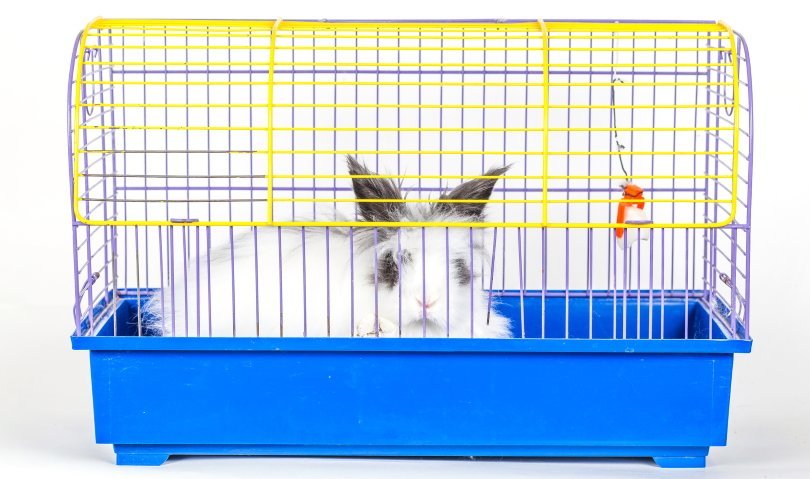
Critter homes for rabbits need to be:
- Large enough for your rabbit to move around in comfortably
- Secure and easy-to-use
- Trendy and colorful
- Easy-to-clean
- Chew-proof latches
- Large front access door
- Weather resistant
- Affordable
- Durable
Where to Place Your Rabbit Cage
Rabbits need to be part of the family, and should be kept indoors near their pet parents. Because they are easily trained to use the litter box, and are accustomed to spending time in their rabbit cages, their cages should be in a convenient place within the home, and also close to people.
The rabbit cage should have a feed hopper and a watering system. Feed hoppers are best in sheet metal with holes in the bottom for easy removal of small food particles. That said, rabbits tend to chew on everything, and will usually destroy materials unless it’s made of stainless steel.
Water bottles should have sipper tubes that are fully functional, and are easy-to clean. Sometimes small bowls can be used, but these can be easily contaminated and need to be washed several times a day with soapy water.
Additionally, rabbits will need to go outside for daily exercise for a few hours each day. If you’re going to breed with your rabbit, a nest box should be set up within the cage.
All rabbits need environmental stimulation! A rabbit cage is best with colorful rabbit toys, and activities for the rabbit. A rabbit cage that only contains the minimal will be inadequate to keep your bunny happy.
Rabbit Cage Size
Rabbits need to be in a cage that allows for them to move around in. Caging materials should include materials that cannot be gnawed and destroyed easily. Wire –rabbit cages should have a minimum of a 12-gauge wire; with a 16-gauge wire for flooring, so that the weight of the rabbit is supported. Giant rabbit breeds will need bigger cages.
Measurements for Rabbit Cages and Hutches
- 12 pound rabbits and larger require a minimal of 30 x 36 inches with a height of 16-18 inches.
- 7-12 pound rabbits need 24-30 inches.
- Smaller breeds will need a minimal cage size of 18-24 inches.
If more than one rabbit is housed in a cage, the cage will need to be larger to comfortably accommodate both rabbits.
Rabbit cages or hutches like the Kaytee Complete Rabbit Kit Habitat is one of the largest rabbit cages offered by Kaytee in a complete format. It offers a 42-inch long by 18-inch wide, and 20-inch high size that gives rabbits ample room to live comfortably in.
The enclosure has chew-proof latches to keep rabbits safe, and offers a large front access door to prevent rabbits from injuring themselves when going in or out of their cages. Kaytee Fiesta rabbit food with their special bedding and water/food bowls are included.
Rabbit Hutches for Extreme Space and Comfort
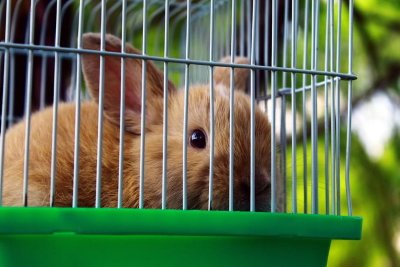
Rabbit hutches are perfect for larger rabbit breeds in that they allow for much more room. Hutches like Hoppity Habitat Rabbit Hutch by Midwest Homes for Pets offers rabbits the very best in rabbit real estate space.
When it comes to rabbits, the more space the better. This hutch offers rabbits durability, weather resistance, and comfort. It’s easy-to-clean and includes a fenced run for much needed exercise runs. With secure lashes and mesh wire, it also offers a secure locking roof that opens up.
Rabbit cages and hutches when outdoors need to be placed in shady spots beneath large trees. And, as always, it’s best to keep cages and hutches far from predators to keep all rabbits safe.
How to Set Up Your Rabbit Cage?
Rabbit hutches or cages are best placed in the garden or garage, even in a large kitchen. Keep in mind that rabbits need constant care, and cannot be left without care for a few days. That said, proper care and daily interaction with pet rabbits is needed. Look for hutches that are large with plenty of ventilation and protection from other domesticated animals.
When setting up your rabbit cage, you’ll need to consider the following:
- Find the most suitable location before bringing your rabbit home.
- Indoors (cage) or outdoors (super large hutch)?
- Decide on whether you’re purchasing one or two rabbits before going out and purchasing a cage and hutch.
- Rabbits are sensitive to heat, and need to be indoors in hot climates. Decide on the location within the home for the rabbit cage.
- Opt for “same sex, same size” if purchasing two rabbits for compatibility.
- Floor space for pet rabbits should encompass 3.5 to 10 square feet per rabbit to allow for rabbits to have their “own space.”
- Easy-to-clean” cages which allow for easy and regular sanitization
- Consider neutering rabbits for easy compatibility, if more than one rabbit.
Rabbit Litterbox
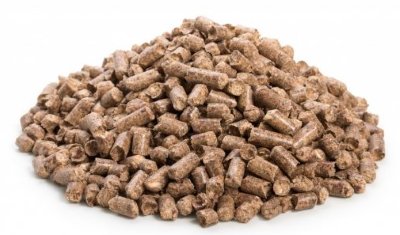
Indoor pet rabbits can be trained to use the litterbox. Rabbits will usually pick a spot and use that area all the time to eliminate. It’s best to place the litterbox in that area if your rabbit spends a lot of time exercising indoors. Litterboxes need to have the following requirements:
- Sturdy
- Easy-to-clean
- Colorful
- Large enough for the rabbit to be able to use comfortably
- Low enough sides for the rabbit to get into.
- Larger rabbit breeds do well with larger litter boxes
- Opt for healthy litter made from lettuce, alfalfa, citrus or paper because rabbits eat their litter.
- Hay is also a good option for litter.
- Litter and hay should be changed twice daily. Newspapers can be placed beneath the hay for urine absorption.
- Opt for rabbit litter from the pet store which makes for easy litter box cleaning and reduces odor.
- Completely empty the litter box out twice weekly and sanitize with Clorox.
Rabbit Toys for The Rabbit Cage
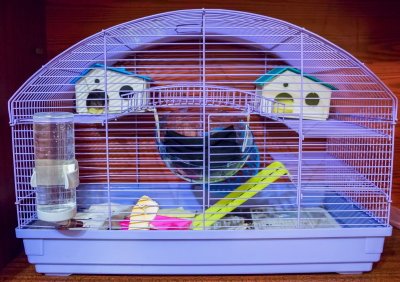
All rabbits need to have fun in their cages. Mental stimulation is an important part of keeping your pet rabbit healthy. While your pet rabbit will spend plenty of time hopping around in his fenced run, it will still be necessary to provide him with interactive rabbit toys to keep him busy in his cage.
The Timothy Club Tunnel gives your rabbit a safe hideout and can be used in his rabbit cage or hutch. It offers an edible enclosure with no wires, or toxic chemicals. Rabbit tunnels can also be found, made from natural materials like twig.
Rabbit Pet Beds
Rabbit beds with mats help protect your rabbit’s paws from the wire at the bottom of cages. These are safe to chew on. Peter’s Woven Grass line mats can be used to line the cage, and are safe for rabbits to chew on. Rabbit pet parents should opt for rabbit pet products that provide an eco-friendly, non-toxic home environment for their pet rabbit. Natural bowl or feeding dishes, eco-friendly and natural rabbit products that are sold in sustainable packaging, and that offer the best in rabbit care should always be considered.
Rabbit enrichment and recreational items are a must when it comes to rabbit care. Essential rabbit care products should be made from high-quality materials that are durable and safe.
Rabbit Food and Water
Rabbits digest fiber poorly and require specialized feeding. That said, they should eat nutrient –rich leaves and new plant shoots instead of older plant materials. Because rabbits have a higher metabolic rate, it’s necessary to feed your pet rabbit only the most nutritious plant parts that meet their nutritional requirements.
What to Know About Rabbit Droppings?
Rabbit pet parents should examine their pet rabbit’s droppings each day to make sure that their pet rabbit has the right amount of fiber in his or her diet. That said, droppings should be hard and pellet-like.
How Much Fiber Does My Rabbit Need?
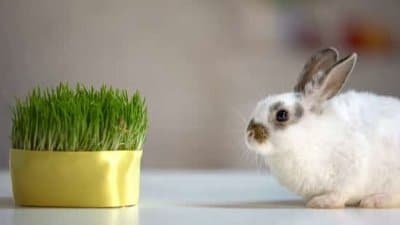
Rabbits also eliminate soft droppings which they eat. The soft droppings contain microbial protein, vitamins, and many essential nutrients that your rabbit will need every day. Additionally, because fiber is poorly digested in rabbits, they should consume a minimal of 15% crude fiber in their diets. This will allow for proper digestion, and also reduce digestive issues in your rabbit like bloat.
Fiber is essential in that it absorbs poisons from bacteria, and allows for the rabbit to get rid of toxins via the hard rabbit droppings. Rabbit diets that contain little to no fiber may increase the chances of your bunny getting enterotoxaemia, which include diarrhea and possibly death.
On the other hand, if you feed your rabbit a diet that contains too much fiber (20% fiber and more), your rabbit may become constipated, and come down with mucoid enteritis. Pet parents need to find the perfect balance when feeding their pet rabbits. A healthy balance of dietary components with fiber is important for your rabbit’s good health and longevity. When it comes down to rabbit nutrition, it’s best to consult with your veterinarian for the best advice.
Rabbit Supplements
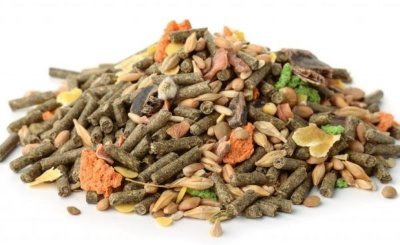
Since gut bacteria produces a combination of B vitamins and vitamin K in the right amounts, vitamin dietary supplements for both are not necessary. Rabbit food diets that have alfalfa meal will usually offer enough vitamin A for your rabbit’s daily needs. Not enough vitamin A can result in a rabbit’s ending pregnancy.
Vitamin E deficiency is linked to infertility, fetal deaths, and muscular dystrophy in rabbits. If your rabbit is moving home or going through a stressful period in his life, daily vitamin requirements may need to be increased to combat stress.
Today, there are numerous brands of high-quality pelleted diets for rabbits that offer the proper nutrients. All pellets need to be stored in an airtight container to preserve vitamin efficacy.
Depending on the life stage of your pet rabbit, the daily vitamin allowance will vary. Life stages during a rabbit lifespan will include pregnancy, nursing, growth or maintenance. Maintenance will depend on the activity level, breed, age, and medical health of the rabbit. That said, high-quality, pelleted rabbit feed provide the correct nutrition for your rabbit.
Additionally, rabbits that are fed hay (alfalfa or clover) and grain (whether it be corn, oats or barley), need to have a trace mineral salt block placed inside their cages. With any prolonged use of a commercial rabbit feed, it’s best to feed a timothy- based hay base to rabbits to avoid kidney damage and calcium carbonate deposits in the urinary tract.
Hay needs to be provided 24/7 to prevent hair balls, and to maintain a healthy digestive tract. As usual, it’s necessary not to expose your rabbit to toxic plants when outdoors. These should be avoided by using exercise runs placed in safe areas of the garden.
Water
Your rabbit will need fresh and clean water every day. Changing out water a few times a day to prevent your rabbit’s elimination from dirtying the water is a good idea. This will keep your rabbit healthy and free of disease.
As rabbit pet parents become more aware of the latest consumer trends, rabbit pet care has not only become much easier, but is also much more efficient today. Stocking up on all the latest rabbit toys and rabbit cage essentials help break monotony, by using accessories and toys to engage their rabbits though play.
Opt for natural, non-toxic materials that are lightweight, durable and that offer innovative designs. That said, before becoming a rabbit pet parent, keep in mind that rabbits do need a considerable amount of care. This will include regular veterinary care, a special diet, plenty of exercise, and as usual, lots of TLC!
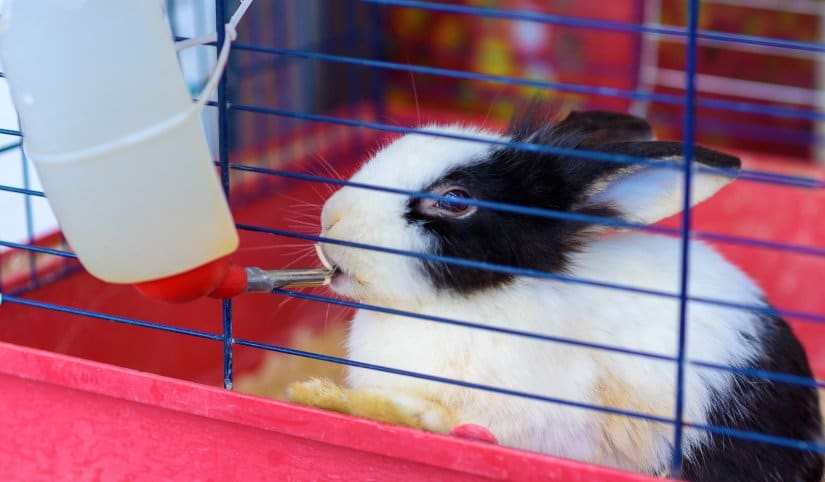
Well thanks for your advice to novicers/bigginners into the rabbits industry.